
Diamond121
Diamond122
Diamond155
Diamond156
Diamond157
Diamond159
Diamond101C
Diamond102C
Diamond 100 Series

1
Before installing this product read all these instructions!
Read these instructions. Keep these instructions. Heed all warnings. Follow all instructions.
Before making any connections, switch all the units in your system o at the mains.
Set the volume control at minimum when you switch on your system or change sources, and turn the level up gradually.
DO NOT use your amplier at full volume.
Ensure that all loudspeakers in the system are correctly wired.
DO NOT subject your loudspeakers to excessive cold, heat, humidity or sunlight.
Loudspeakers should not be placed directly facing other hi- units, or share the same shelf or cabinet.
DO NOT place heavy objects on top of loudspeakers.
Some manufacturers forbid the placing of objects on top of their TV sets. Check your TV handbook before installing the speaker directly on your
TV set. Consult your TV dealer if you are in any doubt.
DO NOT connect speaker terminals to the mains supply.
DO NOT dismantle the loudspeaker. There are no user serviceable parts inside it and you will void the warranty by doing so.
Refer all servicing to qualied service personnel. Servicing is required when the apparatus has been damaged in any way, the apparatus has
been exposed to rain or moisture, does not operate normally, or has been dropped.
Caution: Changes or modications not expressly approved by the manufacturer could void the user's authority to operate this device.
Unpacking Your Loudspeaker
Diamond 100 loudspeakers come in dierent shapes and sizes. If you are unpacking a oor stander, please remember that these units are heavy.
We suggest that you have someone to assist you.
Li the loudspeaker carefully out of the packing. DO NOT try and li the loudspeaker using the protective bag.
Unpack the accessories carefully.
If there is any sign of damage or if the contents are incomplete, report this to your dealer as soon as possible.
Retain the packing for future safe transport of the product. If you dispose of the packing, do so with respect to any recycling provisions in your area.
Attaching the Spikes to Floorstanding Models – 155, 156, 157, 159
· Make sure you have plenty of unobstructed working space.
· Place a so cloth on the oor to protect the loudspeaker.
· Invert the loudspeaker onto the cloth.
· Thread a locknut onto each spike and loosely rub it up the thread.
· Thread the spikes into the spike inserts. Tighten them nger tight.
· Invert the loudspeaker. Be careful not to damage the oor with the spikes.
Levelling the Loudspeakers
When the speaker is upright: You will probably nd that the speaker will wobble with one spike not contacting the oor. Adjust this spike until
all four spikes are in contact to the oor.
With the aid of a spirit level move each spike in and out until the loudspeaker is level and siing squarely on all four
spikes without rocking.
Now tighten each locknut securely against the collar in the plinth to secure the spike.
Screw in rubber feet are provided for use on wood or stone oors etc. and should be aached in the same manner as the
spikes.
Important Safety Information
This symbol indicates that there are important operating and maintenance instructions in the literature
accompanying this unit.

1
Stands and Brackets
The bookshelf loudspeakers are intended primarily for stand mounting, though they can be mounted on wall brackets or even on sturdy
shelves. The quality of loudspeaker stands greatly inuences the performance of your loudspeakers, please do not use imsy products.
Centre Channel Loudspeakers
Each centre channel loudspeaker is supplied with two sets of mounting feet. By using combination of large and small feet the loudspeaker may
be angled to point directly at the listening position. This will be found useful when the centre speaker is positioned under the TV screen.
Preparing the Diamond 100 Loudspeakers
Cables and Connectors
Choosing Loudspeaker Cable
Specialist audio cable usually oers beer performance than general purpose 'bell' or 'zip' wire.
Choose a cable of suitable diameter – cable that is too thin will limit the dynamics of the sound and may impair the bass response. Audio cable
is polarised, with two cores of dierent colours, or oen a raised rib or coloured tracer in the case of twin cable. Before you purchase your cable,
give careful thought to the positioning of your loudspeakers.
This is especially the case if you are bi-wiring your loudspeakers.
Cable lengths to loudspeaker pairs should be the same for le and right channels in order to equalise the signal
transmission. Allow some slack in your speaker cables so you can alter their position to best advantage.
Preparing Loudspeaker Cable
Split the twin cores to a depth of about 40mm. Carefully strip the insulation from each end, leaving about 10mm of
bare wire. If the cable is stranded, lightly twist to gather any loose strands.
Connecting Screw Terminals
All loudspeakers use screw terminals.
Unscrew the terminal. Insert the bare end of the cable into the hole in the base of the terminal. Tighten securely.
When connecting terminals make sure you leave no strands of bare wire that can short across to adjacent terminals.
As an alternative to bare wire you can use specialist spade connectors. Your Wharfedale dealer will be pleased to
advise you on this issue.
Crossover Networks
Bi-Wireable Networks
Most speakers in the Diamond 100 series use a special bi-wireable crossover panel with four
terminal binding posts. Please follow the drawing carefully to see the correct orientation of the
loudspeaker terminals. The upper terminals connect to the treble unit, the lower pair to the bass
unit. As supplied, the treble terminal pair is connected to the bass terminal pair via removable
metal straps. These should be le in place for standard installations.
Why Bi-Wire?
Using separate cables for treble and bass units in a bi-wiring configuration reduces
intermodulation eects and improves headroom and clarity. To bi-wire, you will need to install
two lengths of twin core cable between the amplier and each loudspeaker.

2
The 155, 156, 157 and 159 models are designed to be oor standing. We suggest that they are positioned at least 200mm from the rear walls and
700mm from the side walls, facing slightly inwards. The 121 and 122 models should be stand or wall mounted though they may be placed on a
rigid shelf. The bass extension will improve if the small speakers are operated closer to the rear wall.
If the loudspeakers are placed too close to the walls the bass will increase but may be boomy and indistinct. If the loudspeakers are placed away
from the walls, the inward angle may be increased by up to 40%, although this may restrict the width of the optimum listening position.
A useful rule of thumb is that the listener should be as for from the loudspeakers as they are from each other. The speakers should ideally be
positioned so that the treble units are roughly at ear level to s seated listener. As personal taste plays a large role, experiment with dierent
congurations and play a wide range of programmes before nalising the position of your speakers.
Positioning the Front Loudspeakers
121 - 122
155 - 159
The centre channel loudspeaker should be positioned centrally between the loudspeakers, close to the television and mounted above or below
the screen.
The loudspeaker should be located on a stable at surface to avoid any cabinet movement at high
sound levels. If you mount the unit above the television, move it forward so that the front grille sits
slightly in front of the screen and the top of the cabinet.
A custom stand is available for the model which allows the loudspeaker to be positioned under a
wall mounted monitor and has an adjustable vertical tilt for optimal dispersion.
Positioning the Centre Loudspeaker

3
Standard Connection
Choose a suitable length of twin core speaker cable for each
channel, and prepare the ends. Unscrew each terminal a few
turns.
Connect the red, positive (+) terminal of the Le loudspeaker
to the corresponding red, positive (+) amplifier terminal.
Connect the black, negative (-) terminals similarly. Tighten
the terminals securely. Repeat this procedure for the Right
channel.
Connecting the Front Loudspeakers
Bi-Wiring
Unscrew each terminal a few turns and remove the metal
straps. Connect the cables between the amplifier and the
loudspeakers as indicated above and re-tighten all the
terminals securely.
RIGHT SPEAKER LEFT SPEAKER
BI-WIRED CONNECTION
Bi-Amping
By connecting each loudspeaker drive unit to its own
dedicated amplifier the advantages of bi-wiring can be
extended.
IF you own two indentical stereo power amplifiers, your
speakers may be bi-amped. For further details please consult
your dealer.
RIGHT SPEAKER LEFT SPEAKER
RIGHT SPEAKER LEFT SPEAKER

4
Setting Up a Home Theatre System
Placement
Front and Eects Channels: The front loudspeakers are placed on either side of the television screen, 2 to 3 metres apart. The speakers should
be angled slightly so they car aimed towards the listeners.
We recommend placing the rear eects speakers in a high position, behind the listener’s head. If the rear or side walls are a long way from the
listening seat, consider stand mounting the loudspeakers. If the centre loudspeaker is very high or low, angle it towards the listener’s ear level.
The front faces of the centre and surround loudspeakers should also be in line as far as possible.
Subwoofer: As the ear is unable to detect the direction from which deep bass originates, you have freedom to position the unit. Varying the
distance from the wall alters the bass. Placing the subwoofer across a corner boosts the bass but may impair clarity. The performance of a home
theatre system can be enhanced by using two subwoofers.
6.1 and 7.1 System Placement
Dolby Labs, DTS and THX offer 6.1 and 7.1 format. Although
the precise configuration of these systems will depend on the
capabilities of your processor and you should be guided by those
instructions, we would make some observation.
For 6.1 and 7.1 formats the listening seat should not be too close to
the rear wall.
Optimising the time delay so that information from all speakers
arrives the listening seat coherently is critical of the benets of these
systems are to be fully realised.
Dolby Labs Recommended Placement for Multichannel Home
Theater Systems
Connecting Centre Loudspeaker
The Centre channel speaker may be connected as shown, or bi-wired.
LFE

5
Many A/V processor feature delay seings. The purpose of delay is to enable surround and dialogue information to arrive at the listener’s ears at
the same time as the front channels, even when the listening seat is in a non-ideal position. On some processors, this can be achieved by seing
the distance from the listening position to each speaker, but other system allow only a time delay seing.
Rear Delay: If the listening position is equidistant from the front and rear speakers, set a low delay seing. The closer the listener is to the rear
speakers this higher the delay seing used should be.
Centre Delay: If the centre speaker is level with (or slightly behind) the front speakers, set the delay to zero. If the centre speaker is forward of
the front speakers, increase the delay.
LFE: In the cinema the low frequency eects channel is an extra bass channel with its own subwoofer. In domestic systems the LFE channel
typically feeds into the subwoofer. Where no subwoofer is used, the LFE signal is combined with the front channels and sent to the front
speakers. When you set the LFE level at your A/V processor, use care as powerful low frequencies can overload domestic loudspeakers. If you
hear popping or thumping noises coming from the front loudspeakers or subwoofer, immediately turn the A/V processor’s volume level down
and then lower the LFE level. This should cure the problem. If it does not, lower the volume level at the subwoofer (if you are using one) until
the problem disappears.
Phase: Please read the relevant sections of your A/V amplier manual and familiarise yourself with the various issues. If you are unsure, consult
your dealer for help. A home theatre system should have a precise front stage, a diuse rear stage and good localization of dialogue. If the
colours on the loudspeaker terminals do not correspond with those on the amplier, the sound will appear poorly focused or ‘out of phase’. For
this reason it is essential that the speakers are connected according to the wiring diagrams in this manual.
Connecting loudspeakers correctly (in phase) is essential whether the system is stereo or multichannel. This is especially important if you are bi-
wiring – if only one element in a bi-wired system is incorrectly connected (out of phase), the eects can be very noticeable yet hard to pinpoint.
Delay and LFE Settings
Setting Loudspeaker Sizes and Levels
If you are not using a subwoofer: Set the Front speakers to ‘Large’. Set the ‘Subwoofer’ option on the processor to ‘Off’ or ‘No’. The Front
channels will now receive all the system bass.
If you are using a subwoofer: When set to ‘Small’ all the system bass will go into the subwoofer. If you choose ‘Large’ the Front channel bass will
be reproduced from the Front speakers. Follow the instructions on this page for suitable size and crossover seings.
Once the loudspeaker seings have been nalised, put the A/V amplier into its ‘Test’ mode (see instructions supplied with your processor).
Adjust the level of each channel until all channels are reproduced at equal loudness.
On some programme material the surround channel may seem lower than the front. Do not readjust this level. You may, however, need to adjust
the subwoofer output level. Avoid seing too high a level or you will swamp the sound with bass. This can be tiring to listen to, and may limit
the subwoofer’s ability to respond to large bass transients. You should also set a sensible level going into the subwoofer from the A/V processor.
The subwoofer volume control should be between 12 o’clock and 3 o’clock.
Before investigating a problem, always switch o the system at mains.
If your system is not working properly please work through this checklist before returning the unit to your dealer.
Troubleshooting
Symptom Possible Cause
No Sound System not switched on; Speaker cables shorting terminals out; Wrong source selected
Sound lacks bass content Subwoofer not switched on
Lack of bass reproduction Subwoofer phase incorrect; Subwoofer crossover control too low
Excessive bass distortion at low volumes Subwoofer set to high; LFE level set too high; Subwoofer incorrectly wired
Excessive or distorted bass at high levels System level set too high; Bass control set too high; Subwoofer too close to room corners
Distorted / raling sound at high levels System level set too high; Objects too close to subwoofer
Popping or thumping from the subwoofer System level set too high; Subwoofer level set too high; LFE level set too high
Television picture colour is distorted
Subwoofer too close to TV. (Switch o system and TV, move units away, wait for 15 minutes,
switch on.)

6
Looking After Your Loudspeaker
· Your loudspeakers use special hardwearing sealed nish. They should not be waxed or treated with spray polishes which will smear and
dim the nish. Occasionally polish them with a dry or barely moist cloth to remove dust and nger marks, etc.
· If you play the speakers with the grilles o exercise great care. NEVER operate speakers with the grilles o if there are children or pets in
the house.
· Occasionally, remove the loudspeaker grilles and brush them gently with a so brush before replacing them carefully.
· NEVER use a vacuum cleaner to clean loudspeaker grilles.
· NEVER stand objects on your loudspeakers. In particular do not stand owers etc. on them – they are not jardinières!
· Avoid geing any liquid behind the grille. If you spill liquid on your loudspeakers, take them to your dealer for aention before using them
again.
· DO NOT open the speakers, there are no user serviceable parts inside.
· NEVER touch the drive units either with an object or your hands.
Quality Assurance
Your loudspeakers have been constructed to the highest standards. From top grade furniture construction and nish to carefully designed and
selected acoustic components, Wharfedale speakers are built to provide a lifetime of sonic pleasure. We hope you will derive many years of
good service from our products.
Servicing
In the unlikely event that your unit develops a fault you should return it to your Wharfedale dealer using the original packing to ensure safe
shipping.
The terms of your guarantee may vary in dierent countries. However, in all cases the guarantee excludes:
Liability for damage or loss occurring in transit to or from the purchaser.
All damage caused through accident, misuse, wear and tear, neglect, incorrect installation, adjustment or repair by unauthorised personnel.
Wharfedale will not be liable for any consequential damage, loss or injury, arising from or in conjunction with this equipment.
Service Centre Address
For technical support, servicing or product queries and information please contact either your local retailer or the oce below.
UK
IAG Service Dept.
Unit4
St Margaret’s Way
Stukeley Meadows Industrial Estate
Cambs
PE29 6EB
England
Tel: +44 (0)1480 452561
Fax: +44(0)1480 413403
For information on other authorised service centres worldwide contact Wharfedale International, UK.
A world wide distributors list is available on the Wharfedale website: www.wharfedale.co.uk

7
Specifications
General Description
Enclosure Type
Transducer Complement
Bass Driver
Midrange Driver
Treble Driver
AV Shield
Sensitivity (2.83V @ 1m)
Recommended Amplier Power
Peak SPL
Nominal Impedance
Minimum Impedance
Frequency Response (+/-3dB)
Bass Extension (-6dB)
Crossover Frequency
Cabinet Volume (in litres)
Dimensions (H x W x D)(mm)
Carton Size (mm)
Net Weight
Gross Weight
Standard Accessories
2-way Bookshelf Speaker
Bass Reex
2-way
130mm Woven Kevlar Cone
-
25mm So Dome
No
86dB
25-100W
95dB
8Ω Compatible
4.1Ω
50Hz ~ 20kHz
45Hz
2kHz
7L
315 x 174 x (227+28)
495 x 320 x 410
5.3kg/pcs
12.5kg/ctn
-
2-way Bookshelf Speaker
Bass Reex
2-way
165mm Woven Kevlar Cone
-
25mm So Dome
No
87dB
25-120W
96dB
8Ω Compatible
4.2Ω
45Hz ~ 20kHz
40Hz
2.3kHz
10.3L
354 x 196 x (267+28)
540 x 360 x 450
7.4kg/pcs
16.6kg/ctn
-
General Description
Enclosure Type
Transducer Complement
Bass Driver
Midrange Driver
Treble Driver
AV Shield
Sensitivity (2.83V @ 1m)
Recommended Amplier Power
Peak SPL
Nominal Impedance
Minimum Impedance
Frequency Response (+/-3dB)
Bass Extension (-6dB)
Crossover Frequency
Cabinet Volume (in litres)
Dimensions (H x W x D)(mm)
Carton Size (mm)
Net Weight
Gross Weight
Standard Accessories
Diamond 157
3-way Floorstanding Speaker
Bass Reex
3-way
2 x 200mm Woven Kevlar Cone
130mm Woven Kevlar Cone
25mm So Dome
No
89dB
25-200W
110dB
6Ω
3.1Ω
35Hz ~ 20kHz
32Hz
400Hz & 2.8kHz
Mid Internal 8L
Bass Internal 66.3L
(1103+25) x 250 x (396+28)
510 x 365 x 1225
30.4kg/pcs
34.5kg/ctn
Spikes/Spike Seats
Diamond 159
3-way Floorstanding Speaker
Bass Reex
3-way
2 x 165mm Woven Kevlar Cone
130mm Woven Kevlar Cone
25mm So Dome
No
90dB
25-150W
102dB
4Ω
3.0Ω
40Hz ~ 20kHz
35Hz
400Hz & 2.4kHz
Mid Internal 10.6L
Bass Internal 37.2L
(998+25) x 204 x (366+28)
480 x 320 x 1120
24.4kg/pcs
28kg/ctn
Spikes/Spike Seats
Diamond 121 Diamond 122
2.5-way Floorstanding Speaker
Bass Reex
2.5-way
165mm Woven Kevlar Cone
165mm Woven Kevlar Cone
25mm So Dome
No
89dB
25-150W
102dB
8Ω Compatible
3.7Ω
40Hz ~ 20kHz
37Hz
2.2kHz
35L
(938+25) x 196 x (306+28)
420 x 310 x 1060
19.3kg/pcs
22.5kg/ctn
Spikes/Spike Seats
Diamond 155
Diamond 156
3-way Floorstanding Speaker
Bass Reex
3-way
2 x 165mm Woven Kevlar Cone
130mm Woven Kevlar Cone
25mm So Dome
No
89dB
25-150W
102dB
4Ω
3.0Ω
40Hz ~ 20kHz
35Hz
400Hz & 2.4kHz
Mid Internal 8.8L
Bass Internal 30L
(950+25) x 204 x (320+28)
435 x 320 x 1075
20.4kg/pcs
23.5kg/ctn
Spike/Spike Seat

8
Specifications
Diamond 101C
General Description
Enclosure Type
Transducer Complement
Bass Driver
Midrange Driver
Treble Driver
AV Shield
Sensitivity (2.83V @ 1m)
Recommended Amplier Power
Peak SPL
Nominal Impedance
Minimum Impedance
Frequency Response (+/-3dB)
Bass Extension (-6dB)
Crossover Frequency
Cabinet Volume (in litres)
Dimensions (H x W x D)(mm)
Carton Size (mm)
Net Weight
Gross Weight
Standard Accessories
Optional Accessories
2-way Centre Speaker
Bass Reex
2-way
2 x 130mm Woven Kevlar Cone
-
25mm So Dome
Yes
89dB
25-150W
95dB
8Ω Compatible
4Ω
60Hz ~ 20kHz
65Hz
2.8kHz
11.8L
174 x 470 x (236+28)
560 x 330 x 280
8.2kg/pcs
9.6kg/ctn
-
Centre Base
2-way Centre Speaker
Bass Reex
2-way
2 x 165mm Woven Kevlar Cone
-
25mm So Dome
Yes
90dB
25-200W
96dB
8Ω Compatible
3.8Ω
55Hz ~ 20kHz
55Hz
2.4kHz
17.6L
196 x 530 x (276+28)
620 x 370 x 300
10.8kg/pcs
12.5kg/ctn
-
Centre Base
Diamond 102C
Note: The right is reserved to alter performance, specication and appearance as required.

9

IAG House, Sovereign Court, Ermine Business Park, Huntingdon, Cambs, PE29 6XU, UK
Tel: +44(0)1480 447700 Fax: +44(0)1480 431767 http://www.wharfedale.co
.
uk
IAG reserves the right to alter the design and specications without notice. All rights reserved IAG Group Ltd.
Wharfedale is a member of the International Audio Group. CODE: WH12-MNL0011a
-
 1
1
-
 2
2
-
 3
3
-
 4
4
-
 5
5
-
 6
6
-
 7
7
-
 8
8
-
 9
9
-
 10
10
-
 11
11
-
 12
12
Ask a question and I''ll find the answer in the document
Finding information in a document is now easier with AI
Related papers
-
Wharfedale RS-10 User manual
-
Wharfedale 10.4 User manual
-
Wharfedale DX-1 User manual
-
Wharfedale Crystal User manual
-
Wharfedale RS-10 User manual
-
Wharfedale Denton 85 User manual
-
Wharfedale WH-SR1 User manual
-
Wharfedale DX-1HCP User manual
-
Wharfedale WH-S8 & WH-S10 User manual
-
Wharfedale EVO20 User manual
Other documents
-
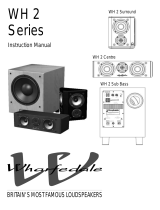 Wharfedale Pro WH 2 Series User manual
Wharfedale Pro WH 2 Series User manual
-
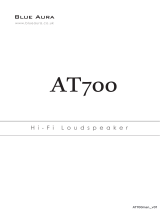 Blue Aura AT700 HiFi Loudspeaker User manual
Blue Aura AT700 HiFi Loudspeaker User manual
-
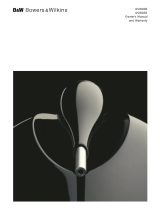 Bowers & Wilkins ASW800 User manual
Bowers & Wilkins ASW800 User manual
-
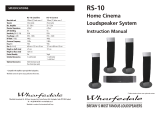 Wharfedale Pro RS-10 User manual
Wharfedale Pro RS-10 User manual
-
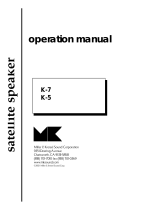 M&K Sound K-5 User manual
M&K Sound K-5 User manual
-
Box-Design Speaker Box 5 Product information
-
Wharfedale Pro Diamond 9.SR User manual
-
Mission MS-10 User manual
-
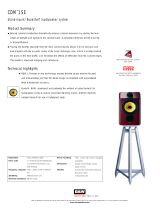 Bowers & Wilkins 1 SE User manual
Bowers & Wilkins 1 SE User manual
-
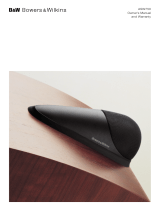 Bowers & Wilkins ASW750 Owner's manual
Bowers & Wilkins ASW750 Owner's manual


















